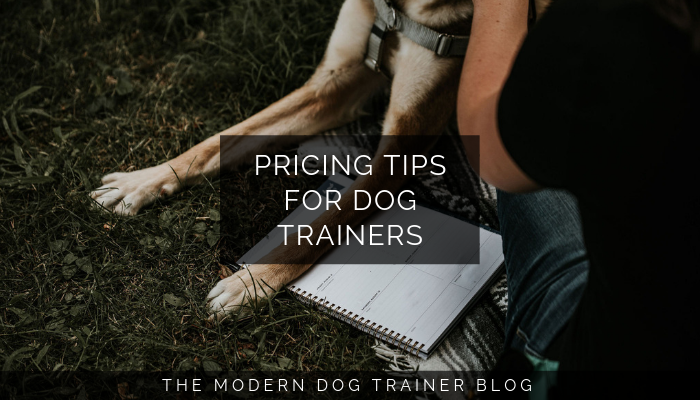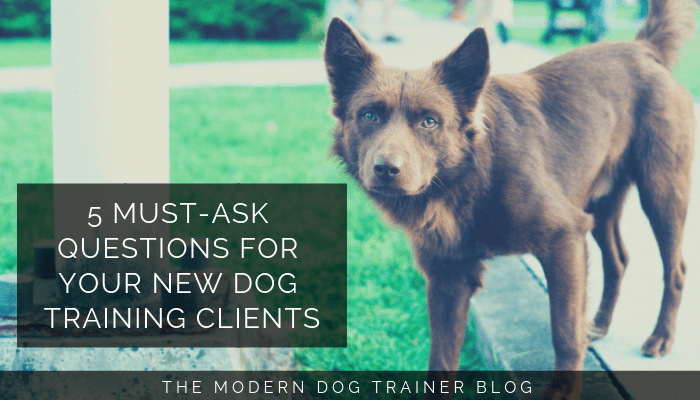
Pricing Tips for Dog Trainers
There are few things that drive me as crazy as dog trainers undercharging for their services, and it’s something I absolutely have to address.
Undercharging is Taking the Easy Way out of Hard Conversations
The idea that many new trainers have is that in charging low prices, potential clients are more likely to say yes to working with them.
It doesn’t work.
You can’t avoid charging what you’re actually worth. You need to build up the guts to ask for what you need to survive, pay the bills, run your business, and then some.
Do you want to be the most affordable, or the best? You can’t be both—you’ll burn yourself out. You have to focus on the quality of your work and the income will follow.
Common Pricing Mistakes
The trouble with pricing is many trainers don’t know how to determine their rates and end up making things hard on themselves.
Don’t Rely on Your Competition’s Rates for Guidance
Don’t only look at your competition’s rates to help determine yours. It’s not helpful as anything but a starting point.
You aren’t selling your services to your competition, nor your competition’s clientele. Every trainer is different and has their own method of teaching and communicating, and a unique skill set. There are massive variables between every trainer!
Don’t Ask for Pricing Advice from Friends or Family
Unless your best friend is a dog training business consultant, don’t ask them for pricing advice. It would be like asking a veterinarian for tips on how to sell your home. People who don’t have a deeper understanding of your industry, knowledge, skillset, and occupational hazards will not be able to give you truly appropriate financial advice.
Charging Hourly Isn’t Sustainable
Though charging hourly rates can be a good way for businesses less than six months old to make money, it’s not sustainable long-term. Eventually, you will reach a limit on how many hours you can provide.You can’t manage your time if you aren’t charging for the whole service you provide, rather than just your working hours.
Remember that your rates aren’t just for the hands-on training time—your client is paying you for a professional consultation, learning materials, your education, and more.
So now that you know that charging more is worth it, how do you explain that to your clientele?
Communicate Your Value to Clients
You will, at some point, face backlash from a client with regard to pricing. People want the quickest, cheapest, easiest solution from dog trainers.
If your customers have qualms about your pricing, politely stand your ground and explain your value.
Many trainers are doing far more than teaching dogs to sit and stay. You are changing their family. You are preventing dogs from causing harm to people out of fear. You are rehabilitating animals. You are helping someone gain their independence through a working dog.
You’re making their dog more cooperative and happy. You’re making it possible for them to take their dog on a walk and enjoy it without fear of their dog lunging or snapping on leash. Your work is so valuable.
You have to be your own number one hype-man. It may be hard at first—being a salesman for your own services isn’t easy— but once you start understanding the process it becomes natural to you, and repetition creates muscle memory.
It’s okay to treat your business like a business. You can make money and help people and their dogs. And in charging the right amount, you’ll make it possible to focus on the quality of your work and your personal growth.
Subscribe to our email newsletter below to receive the latest updates and blog articles in your inbox.



 After having the opportunity to talk to many other dog trainers over the years, I’ve discovered some trends that I want to bring to your attention.
After having the opportunity to talk to many other dog trainers over the years, I’ve discovered some trends that I want to bring to your attention.
 As dog trainers, we often have a limited budget to start up and run our businesses. Fortunately, there are a few free tools available to improve your efficiency and make your business run smoother and faster without extra financial burden.
As dog trainers, we often have a limited budget to start up and run our businesses. Fortunately, there are a few free tools available to improve your efficiency and make your business run smoother and faster without extra financial burden.




 Being a professional dog trainer can be an incredibly fulfilling profession. You can work for another company, but most quickly find out that to make a sustainable living, it’s best to run your own business.
Being a professional dog trainer can be an incredibly fulfilling profession. You can work for another company, but most quickly find out that to make a sustainable living, it’s best to run your own business.

 In this episode of The Modern Dog Trainer Podcast, we invited
In this episode of The Modern Dog Trainer Podcast, we invited 

